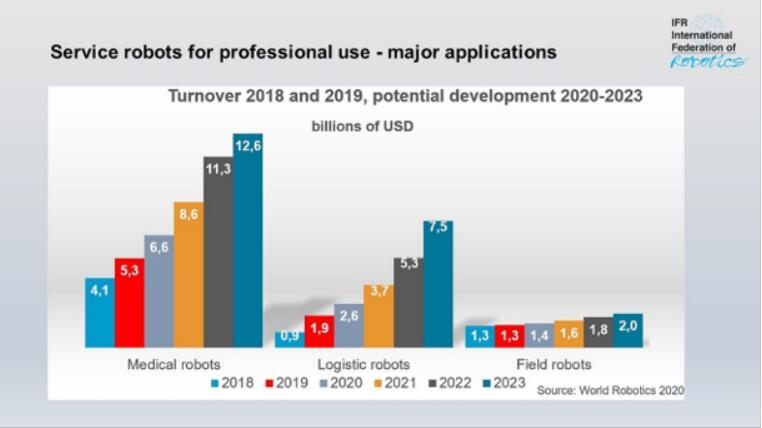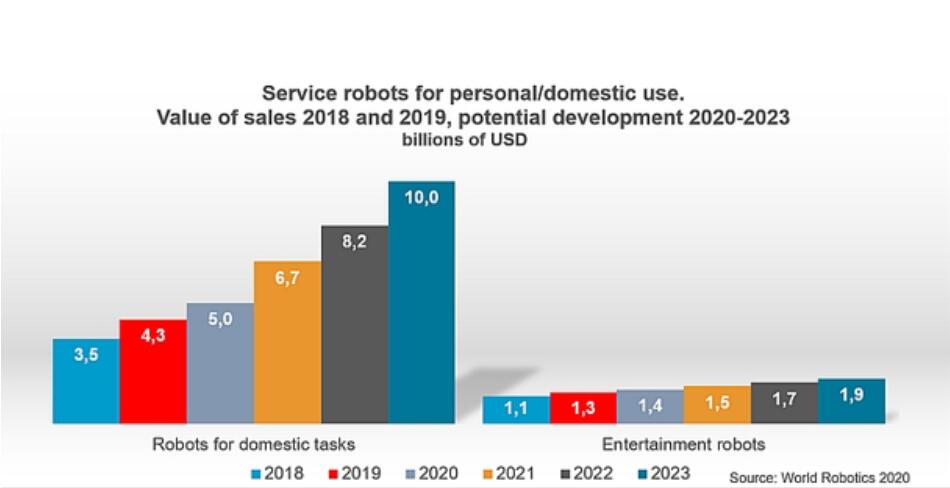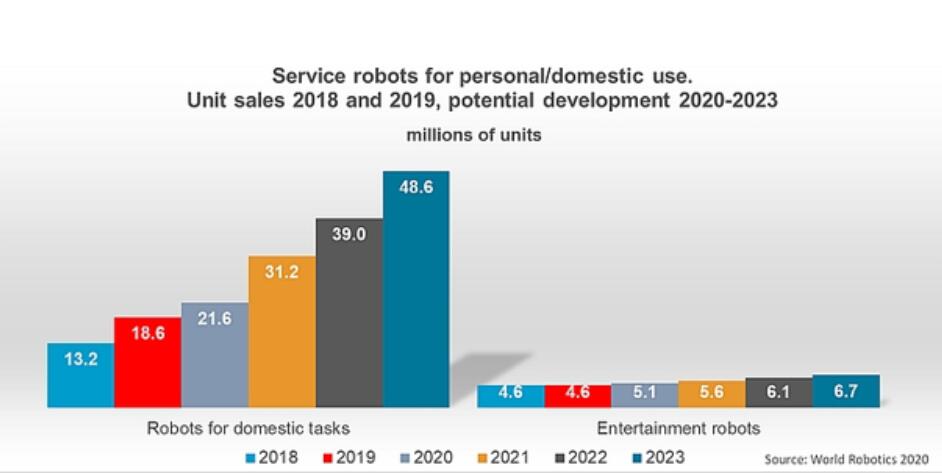Call Us Now
TEL: +86-4000988557;
Teams: gfreex@hotmail.com;
WeChat: Troysupply_com;
QQ ID: 8936906.
The International Federation of Robotics (IFR) reported in Frankfurt, Germany on October 28 that the global sales of professional service robots increased by 32% to 11.2 billion USD (2018-2019). The new crown epidemic will further stimulate the service robot market. The current surge in market demand for robot disinfection solutions, factory and warehouse robot logistics solutions, and home delivery robots shows this trend.

According to the IFR2020 Global Robots Annual Report, the sales of medical robots in 2019 accounted for nearly half (47%) of the total sales of professional service robots, of which robotic surgical systems contributed the most, because such service robots have the highest price. In 2019, sales of medical robots reached 5.3 billion U.S. dollars, an increase of 28% year-on-year, a record high. By 2022, the sales potential of medical robots will more than double and is expected to reach 11.3 billion US dollars. Among them, about 90% of medical robots come from suppliers in the United States and Europe.
Professional service robot-logistics robot
In 2019, the sales or lease of logistics robots surged by 110% to 1.9 billion US dollars, and most of the sales came from indoor application robots. Autonomous mobile robots have been used in digital production warehousing, and are also part of the current intelligent manufacturing. Therefore, the annual turnover of logistics robots may continue to maintain a strong growth of 40% or even higher. IFR Chairman Milton Guerry said: "In the manufacturing process, the investment cost of logistics service robots can be quickly recovered. If it runs uninterrupted for 24 hours, the investment of logistics service robots can be recovered within 2-3 years, which is actually even faster. The service life is 15 years, and the operating cost is about 5% of the annual investment. A well-developed system can usually be at least 98% efficient."

The current popular "Robot as a Service (RaaS)" business model lowers the threshold for customers to achieve automation through robots. The advantage of this model is that customers do not need to invest in hardware, so the company does not need to have fixed funds, fixed costs, and does not require specialized robot operators. The driving force for the application of robotic logistics systems in non-manufacturing industries mainly comes from the warehousing solutions implemented by large e-commerce companies. Hospitals also have great potential and use professional service robots to assist in handling hospital logistics. In the field of professional service robots, about 90% of the logistics robots in the above applications are produced in Europe and North America, and about 10% are in Asia.
Professional Service Robot-Field Robot
Field robots include agriculture, dairy, animal husbandry and other field robots. Sales in 2019 increased by 3% year-on-year to reach US$1.3 billion. The new crown epidemic may have boosted the application of such robots. For example, due to travel restrictions, workers in Eastern Europe cannot work in Western Europe during the harvest season as usual, resulting in a labor shortage. Local farmers may use field robots to solve this problem. Compared with the previous year, the sales growth of agricultural robots is expected to exceed 30%.
Personal and family service robots
Personal and household service robots produced for the mass market mainly refer to the field of household robots, including vacuum and floor cleaning robots, lawn mower robots and entertainment robots. In 2019, the total sales of personal and household service robots exceeded 23.2 million units, an increase of 34% over the same period of the previous year; sales rose by 20% to reach US$5.7 billion. In recent years, the unit prices of the two most important products-robot vacuum cleaners and toy robots have been declining. Currently, the basic robot vacuum cleaner sells for less than $100. In 2019, 75% of the world's domestic service robots-vacuum cleaners and floor cleaners, lawn mowers and other household robots-were produced by American companies. Asian companies account for 19% of the global market, and European companies account for 6%.

Assistive robots for the elderly/the disabled are a rapidly growing market. In 2019, sales of assistive robots reached US$91 million, an increase of 17% year-on-year. Numerous research projects around the world have gathered in the field of service robots, and many countries attach great importance to this market with great development potential. Unlike most entertainment robots, assistive robots for the elderly/disabled are high-tech products.
Milton Guerry, chairman of the International Federation of Robotics, said: "We expect that the sales of professional service robots and personal service robots will continue to maintain strong growth in the future."
 Online service
Online service 4000988557
4000988557 sales1@troysupply.com
sales1@troysupply.com sales2@troysupply.com
sales2@troysupply.com Richard Liu
Richard Liu TROY
TROY 8936906
8936906 Troysupply_com
Troysupply_com